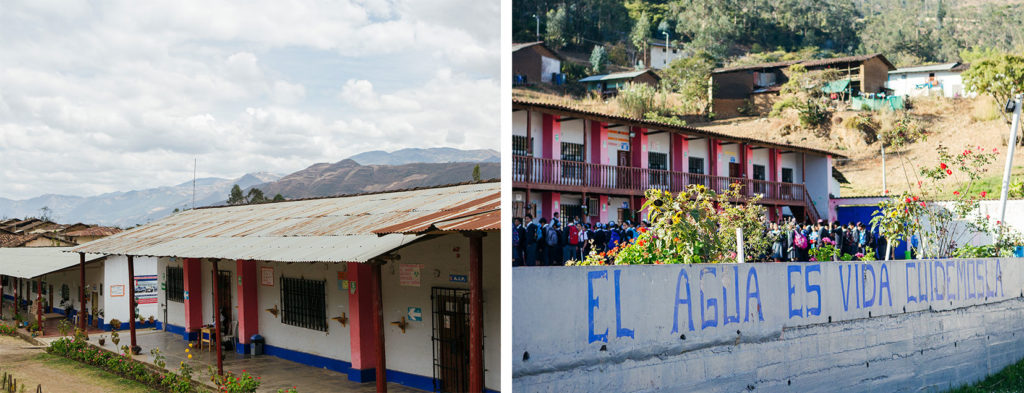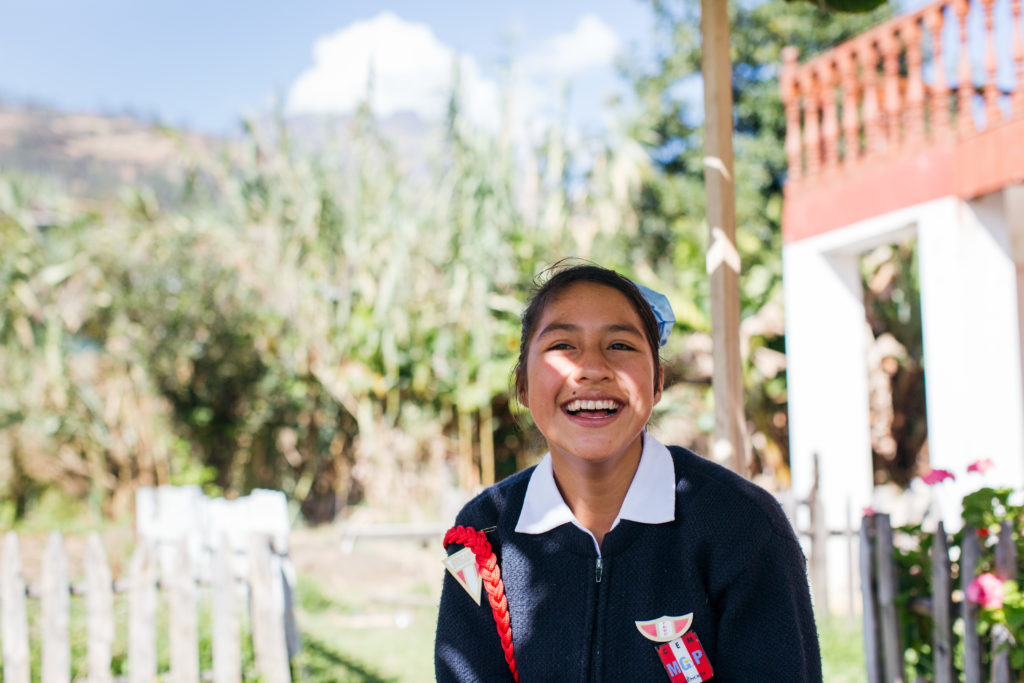The story of one determined teacher who has changed the future of water for an entire community.
Neatly cultivated fields cover the steep slopes of the Andes, lining the countless hairpin turns on a narrow road that bring you to the quiet mountain town of Asunción in Peru. Nestled at over 7,000 feet of elevation, the town’s 1,600 residents are accustomed to the slow pace of farming life in their corner of the mountains.
Step inside the town’s secondary school, though, and you feel the energy. Students in navy uniforms rush across the courtyard and along the plant-lined corridors on their way to their first classes of the day. In the science and environmental classroom, posters about water and taking care of the environment cover the walls, and students are proudly sharing about these topics. Agua es la vida, the students say whenever they talk about water. Water is life.

Science and environmental teacher Maritza Rodríguez Atalaya has been a teacher here for 15 years.
"I love my career," she says. "Being a teacher is my passion."
Petite and sprightly, Maritza’s teenage students tower over her. But don’t be deceived by her small stature. Although she may humbly say otherwise, Maritza is the powerhouse behind getting water to the school.
When she first started teaching at the school, Maritza says her students would ask her to go get water. "I was surprised – I’d never had students ask me this," she said. One day she followed them, and realized they were going to a nearby spring, but the water they were drinking was contaminated and led to diarrhea and other illnesses that would often keep students home from school.
Determined to change this for her students, she instituted a new classroom policy: the students would take turns bringing home a large plastic jug. They’d boil water at home and bring the jug back, full of water that was safe for their classmates to drink.
But this could only be a temporary solution. Students who lived far away had trouble carrying the heavy jug, and Maritza was also still concerned about the untreated water from the nearby spring. Although the water wasn’t safe for drinking, it was going to waste.
"No one was using the spring," she said. "It would overflow and be wasted and go onto the streets."
Despite resistance from the school leadership, Maritza was determined to create change.

"I started anew, working and working," Maritza says. "But there was no support – not from the other teachers or the principal. The project was only mine."
Maritza forged ahead however she could, teaching the students who cycled through her classroom about the importance of safe water and hygiene and taking care of the environment. For years, she did this, all on her own.
And then in 2015, the school got a new principal.
"I told him about the project and he really liked it," Maritza said. "He said, ‘You have all of my support, you have to do this.’"
In the past two years, the school has made huge strides. They connected the nearby spring to the school, and now that previously contaminated and wasted water is now treated and safe for students to drink. Each student brings a water bottle to school each day – constantly refilling it with drinking water and reducing environmental waste. The education Maritza started in her own classroom on water, hygiene, and the environment has spread through the entire school, infiltrating every class and empowering students to change norms in their own families and communities.

One day, Maritza says she was on a bus to a neighboring city and saw someone throw a glass bottle out of the bus window. Two girls on the bus were so upset they approached the man who threw the bottle to tell him why he shouldn’t do that.
"I looked and it was two former students from the school," Maritza said. "That is something that as a teacher made me satisfied. I’m really happy with how things are improving."
Maritza’s years of perseverance have paid off, and the entire culture at the school around water and sanitation has changed. Her students are sharing what they’ve learned with their families and throughout their communities – and all of Asunción is feeling the impact.

